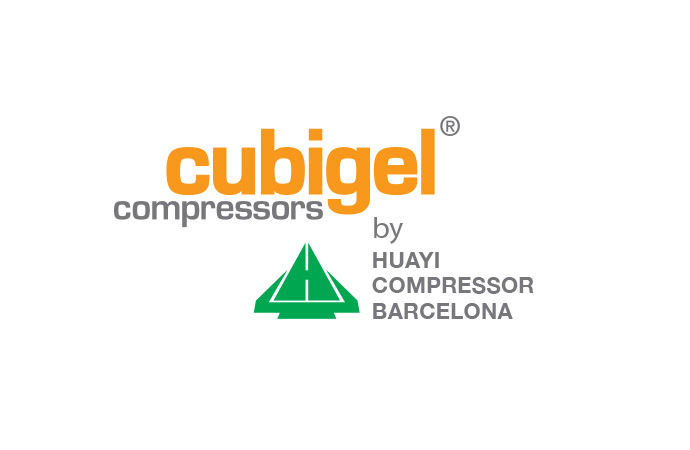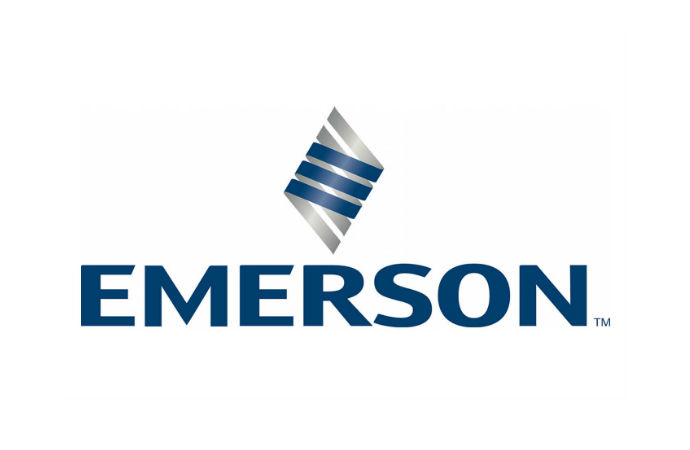Carel, Emerson Climate Technologies, Huayi Compressor Barcelona, Embraco, the Universitat Politècnica de València and the Università degli Studi di Napoli Federico II will share their latest hydrocarbon technology developments at ATMOsphere Europe 2015. They will discuss a range of topics including BLDC water loop systems, R290 self-contained display cases, propane LBP fixed speed compressors, ultralow cascade biomedical applications and propane water-to-water heat pump boo

The ATMOsphere Review Panel has announced the case studies selected for presentation at the 6th edition of ATMOsphere Europe, which will be held on 16 & 17 March 2015. The conference serves as a forum for leading HVAC&R industry experts to discuss the latest natural refrigerant technology innovations, market trends and regulatory issues.
BLDC waterloop systems in commercial refrigeration: the new frontier for natural refrigerants by Diego Malimpensa, CAREL
A BLDC waterloop system for commercial applications is a simple system in which each cabinet has its own small refrigeration system (self-contained) with a dedicated modulating compressor. Thanks to BLDC rotary/scroll compressors, energy efficiency levels are drastically improved compared to standard applications with compressor racks and remote cabinets. CAREL is now adding the benefits of natural refrigerants to the system, pioneering the research and testing of the BLDC waterloop system with propane and CO2. The case study will present data from sites running with R410A and will compare them with lab tests done with propane and CO2.
Hydrocarbons – a viable natural refrigerant solution for medium temperature commercial refrigeration applications by Venugopal Kandi, Emerson Climate Technologies
Hydrocarbons are already widely used in low temperature self-contained display cases. The use of hydrocarbons can be extended to medium temperature applications including decentralized commercial refrigeration equipment i.e. self-contained display cases, hydrocarbon indirect systems, condensing units and small cascade systems. The use of hydrocarbons in self-contained display cases results in achieving the required cooling capacities with less refrigerant charge and smaller displacement compressors. In indirect systems, the use of hydrocarbons allows placing a natural refrigerant in the primary circuit. These systems are ideal for convenience stores and small retail applications in both cold and warmer climates.
The presentation will focus on a refrigeration manufacturer in central Europe who is conducting a field trial with R290 self-contained display cases equipped with Emerson Climate Technologies scroll compressors, flow controls and electronic controllers. Other refrigeration system manufacturers are prototyping and field testing hydrocarbon indirect systems and cascade systems. Real life references for these system architectures such as self-contained display cases and hydrocarbon indirect systems will be presented, looking at advantages, current and future challenges and key lessons learned.
The lowest energy consumption when using propane LBP fixed speed compressors in a light commercial refrigeration freezer by Vicente Guilabert, Huayi Compressor Barcelona
Huayi Compressor Barcelona will discuss its recently launched U range compressors for light commercial freezer applications. The case study will focus on real experiences testing an existing freezer LBP, highlighting the complete system energy savings achieved due to the R290 U range LBP as an alternative to the previous L range compressors, as well as other competing compressors. An energy consumption test has shown energy savings of up to 25% (without considering variable speed motor compressor technology).
Low global warming alternatives for ultralow cascade applications by Marek Zgliczynski, Embraco
Apart from isobutane in household type appliances, significant progress has been made in the implementation of propane in light commercial plug-in systems. Even if not included in the new EU F-Gas regulation, cascade ultralow appliances can be easily modified to use hydrocarbons, thereby reducing their environmental impact.
In ultralow biomedical cascade applications, highly polluting substances are currently used. Embraco’s case study will show how to convert present -86°C applications into products with low environmental impact by using hydrocarbons in both system stages. The case study will highlight a unique compressor product line for ultralow cascade applications.
A propane water-to-water heat pump booster for sanitary hot water production by J.M. Corberan, J. Gonzalvez, C. Montagud & E.Navarro-Peris, Instituto de Ingeniería Energética, Universitat Politècnica de València and R. Mastrullo, A.W. Mauro & M. Tammaro, Dipartimento di Ingegneria Industriale - Sezione ETEC, Università degli Studi di Napoli Federico II.
This study is related to one of the heat pump prototypes developed under the framework of an FP7 European Project, Next Heat Pump Generation Working with Natural Fluids (NxtHPG), which aims at the definition of five high efficiency heat pump prototypes working with natural fluids.
The prototype presented in this case study is a 50 kW heat pump booster for heat recovery of waste heat from a neutral water loop with temperatures in the range of 10-30°C for domestic hot water production at 60°C. The heat pump, which has been manufactured by CIATESA, works with propane. This case study will discuss the main characteristics of the design, construction and performance of the heat pump prototype and will present experimental measurements obtained during the first experimental campaign of the prototype.
For more information about the case studies listed above, as well as other case studies selected, please take a look at the following articles:
First round of case studies selected for ATMOsphere Europe
New round of case studies selected for ATMOsphere Europe
ATMOsphere review board announces final case study selections
General information about the conference can be found at www.ATMO.org/europe2015.
To register for the event, please visit www.ATMO.org/europe2015/registration
BLDC waterloop systems in commercial refrigeration: the new frontier for natural refrigerants by Diego Malimpensa, CAREL
A BLDC waterloop system for commercial applications is a simple system in which each cabinet has its own small refrigeration system (self-contained) with a dedicated modulating compressor. Thanks to BLDC rotary/scroll compressors, energy efficiency levels are drastically improved compared to standard applications with compressor racks and remote cabinets. CAREL is now adding the benefits of natural refrigerants to the system, pioneering the research and testing of the BLDC waterloop system with propane and CO2. The case study will present data from sites running with R410A and will compare them with lab tests done with propane and CO2.
Hydrocarbons – a viable natural refrigerant solution for medium temperature commercial refrigeration applications by Venugopal Kandi, Emerson Climate Technologies
Hydrocarbons are already widely used in low temperature self-contained display cases. The use of hydrocarbons can be extended to medium temperature applications including decentralized commercial refrigeration equipment i.e. self-contained display cases, hydrocarbon indirect systems, condensing units and small cascade systems. The use of hydrocarbons in self-contained display cases results in achieving the required cooling capacities with less refrigerant charge and smaller displacement compressors. In indirect systems, the use of hydrocarbons allows placing a natural refrigerant in the primary circuit. These systems are ideal for convenience stores and small retail applications in both cold and warmer climates.
The presentation will focus on a refrigeration manufacturer in central Europe who is conducting a field trial with R290 self-contained display cases equipped with Emerson Climate Technologies scroll compressors, flow controls and electronic controllers. Other refrigeration system manufacturers are prototyping and field testing hydrocarbon indirect systems and cascade systems. Real life references for these system architectures such as self-contained display cases and hydrocarbon indirect systems will be presented, looking at advantages, current and future challenges and key lessons learned.
The lowest energy consumption when using propane LBP fixed speed compressors in a light commercial refrigeration freezer by Vicente Guilabert, Huayi Compressor Barcelona
Huayi Compressor Barcelona will discuss its recently launched U range compressors for light commercial freezer applications. The case study will focus on real experiences testing an existing freezer LBP, highlighting the complete system energy savings achieved due to the R290 U range LBP as an alternative to the previous L range compressors, as well as other competing compressors. An energy consumption test has shown energy savings of up to 25% (without considering variable speed motor compressor technology).
Low global warming alternatives for ultralow cascade applications by Marek Zgliczynski, Embraco
Apart from isobutane in household type appliances, significant progress has been made in the implementation of propane in light commercial plug-in systems. Even if not included in the new EU F-Gas regulation, cascade ultralow appliances can be easily modified to use hydrocarbons, thereby reducing their environmental impact.
In ultralow biomedical cascade applications, highly polluting substances are currently used. Embraco’s case study will show how to convert present -86°C applications into products with low environmental impact by using hydrocarbons in both system stages. The case study will highlight a unique compressor product line for ultralow cascade applications.
A propane water-to-water heat pump booster for sanitary hot water production by J.M. Corberan, J. Gonzalvez, C. Montagud & E.Navarro-Peris, Instituto de Ingeniería Energética, Universitat Politècnica de València and R. Mastrullo, A.W. Mauro & M. Tammaro, Dipartimento di Ingegneria Industriale - Sezione ETEC, Università degli Studi di Napoli Federico II.
This study is related to one of the heat pump prototypes developed under the framework of an FP7 European Project, Next Heat Pump Generation Working with Natural Fluids (NxtHPG), which aims at the definition of five high efficiency heat pump prototypes working with natural fluids.
The prototype presented in this case study is a 50 kW heat pump booster for heat recovery of waste heat from a neutral water loop with temperatures in the range of 10-30°C for domestic hot water production at 60°C. The heat pump, which has been manufactured by CIATESA, works with propane. This case study will discuss the main characteristics of the design, construction and performance of the heat pump prototype and will present experimental measurements obtained during the first experimental campaign of the prototype.
For more information about the case studies listed above, as well as other case studies selected, please take a look at the following articles:
First round of case studies selected for ATMOsphere Europe
New round of case studies selected for ATMOsphere Europe
ATMOsphere review board announces final case study selections
General information about the conference can be found at www.ATMO.org/europe2015.
To register for the event, please visit www.ATMO.org/europe2015/registration
MORE INFORMATION
Related stories








